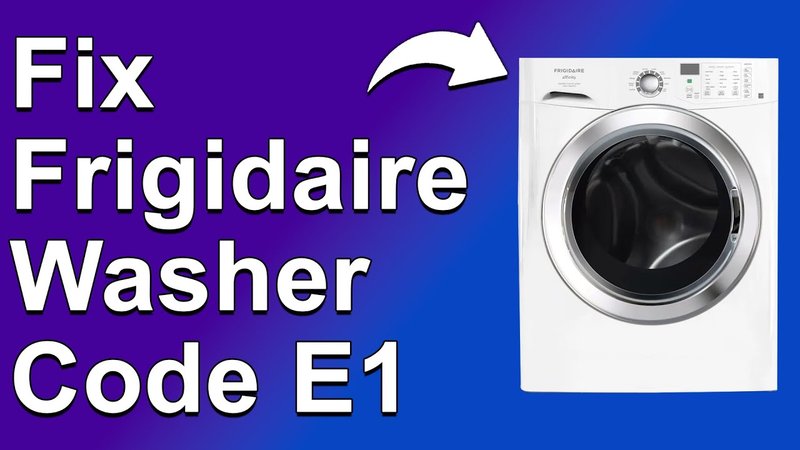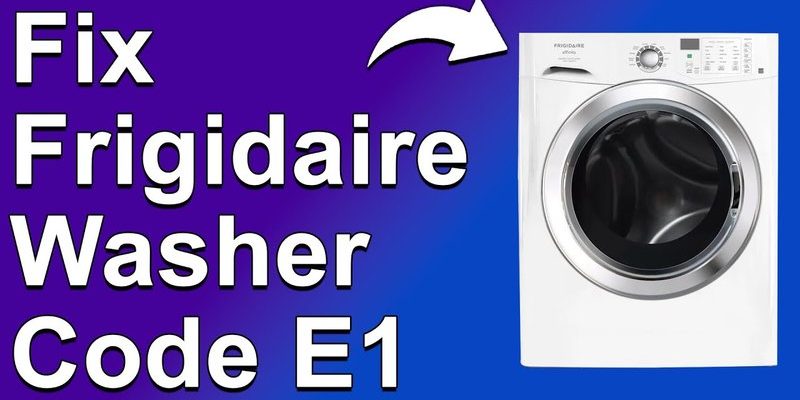
You might be wondering, what exactly does E1 mean? In simple terms, the E1 error code typically indicates a problem with the temperature sensor or thermistor. This is the part of your fridge that monitors the interior temperature, ensuring your food stays fresh and safe. When this sensor fails or malfunctions, it can send incorrect data to the fridge’s control board, much like a faulty speedometer in a car that gives you the wrong reading. While your fridge isn’t in a state of emergency, it’s crucial to address this issue to prevent it from escalating.
Understanding the E1 Error Code
When you see the E1 error code popping up, it’s like having a dashboard light flash on your car. It’s your fridge’s way of letting you know there’s something up with its internal environment. Typically, this error arises from a broken or malfunctioning temperature sensor. Imagine cooking with a stove but without being able to adjust the heat properly—that’s how your fridge feels without accurate temperature readings.
So, why does this happen? Well, over time, the sensor can wear out due to general wear and tear or exposure to fluctuating temperatures. Dust, grime, or even ice buildup can interfere as well, leading to inaccurate readings. When the sensor sends incorrect temperature data to the control board, the fridge might not cool properly, potentially affecting food preservation.
You might be asking, “Can I still use my fridge with this code on?” Technically, yes, you can. However, using it without addressing the issue could lead to inconsistent temperatures, which might spoil food faster. It’s like running with a pebble in your shoe; you could do it, but it’s not comfortable or recommended.
Troubleshooting the E1 Error Code
Alright, let’s dive into how you can tackle this issue. First, consider checking the basics: ensure your refrigerator is properly connected to power, and there’s no visible damage to the mains. Sometimes, a simple power cycle—turning off the fridge and turning it back on—can reset the error if it’s just a temporary glitch, much like rebooting a computer to solve a minor software hiccup.
If the error persists, the next logical step is to inspect the temperature sensor or thermistor itself. This can be a bit tricky if you’re not comfortable with appliance repairs, as it involves accessing the inner parts of your fridge. This sensor is usually located near the evaporator coil or in the back panel of your fridge. If it looks damaged or covered in ice, cleaning or replacing it might fix the issue.
However, if you’re not confident in handling these components, don’t hesitate to call in professional help. A technician can thoroughly assess the problem, ensuring the fix is both safe and effective. Think of it as calling a plumber when your pipes are acting up—it saves you the hassle and ensures everything is in good working order.
Preventing Future Error Codes
The best way to avoid future episodes of the E1 code is through regular maintenance. Just as you’d periodically service your car, your fridge benefits from a similar approach. Keep the appliance clean, particularly the fans and coils, to ensure optimal airflow. This helps prevent overheating and reduces the strain on components like the thermistor.
It’s also wise to ensure that your refrigerator is not overpacked. A cramped fridge blocks air circulation, potentially leading to uneven temperatures. Imagine trying to breathe with your nose pinched—it’s much harder, right? The same applies to your fridge’s air flow.
Lastly, be mindful of where your fridge is positioned in the kitchen. Ensure it’s not too close to heat sources like ovens or direct sunlight, as these can cause the fridge to work harder and potentially lead to internal sensor errors. By following these simple steps, you can extend your fridge’s lifespan and keep it running smoothly.
When to Seek Professional Help
Sometimes, even our best efforts aren’t enough to solve appliance issues, and that’s perfectly okay. If you’ve tried the troubleshooting steps and the E1 code persists, or if you’re uncomfortable with any part of the process, calling a professional is the way to go. These experts have the tools and knowledge to diagnose and fix the problem efficiently, saving you from further worries or potential damage.
A skilled technician can not only resolve the current error but also check for other underlying issues that might have escaped your notice. It’s like having a mechanic take a look under your car’s hood; they might find something you hadn’t even considered. Plus, professionals can offer tailored advice on maintaining your fridge for optimal performance.
So, if you’re unsure about tackling this fridge issue alone, remember there’s no shame in seeking help. After all, ensuring the safety and efficiency of your refrigerator is essential, and a professional repair can give you peace of mind that everything is in tip-top shape.
Concluding Thoughts: Ensuring Safety and Performance
At the end of the day, addressing the E1 error code on your Frigidaire refrigerator is crucial for maintaining food safety and appliance performance. While it might seem like a small blip on the radar, ignoring it could lead to larger issues down the line. It’s a bit like a leaky faucet where fixing it early can prevent water damage and high bills later.
By understanding what the E1 code means, how to troubleshoot it, and when to call for professional help, you’re well-equipped to handle this hiccup. Embrace the opportunity to learn more about your fridge’s inner workings, and keep it running smoothly with regular maintenance. In doing so, you’ll ensure that your trusty kitchen companion continues to keep your food fresh for years to come.
